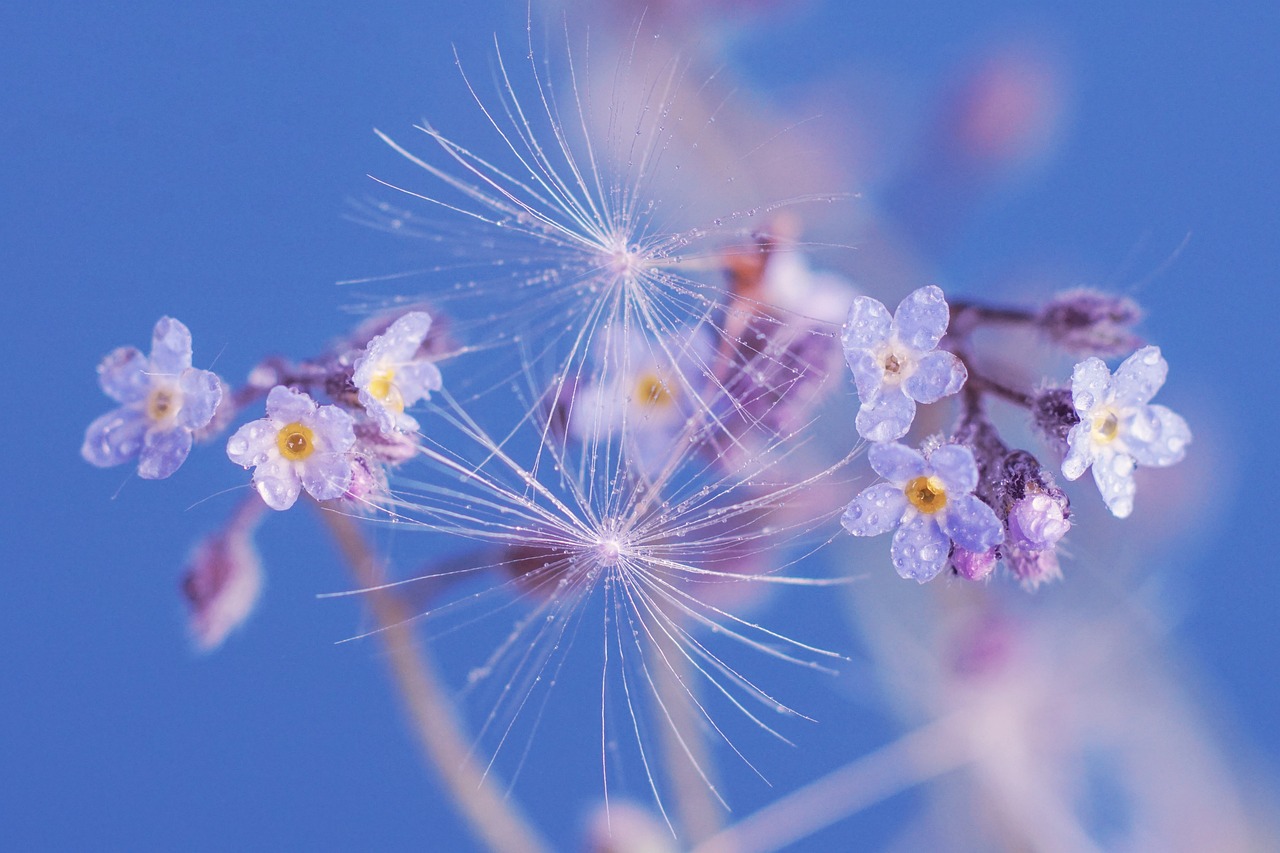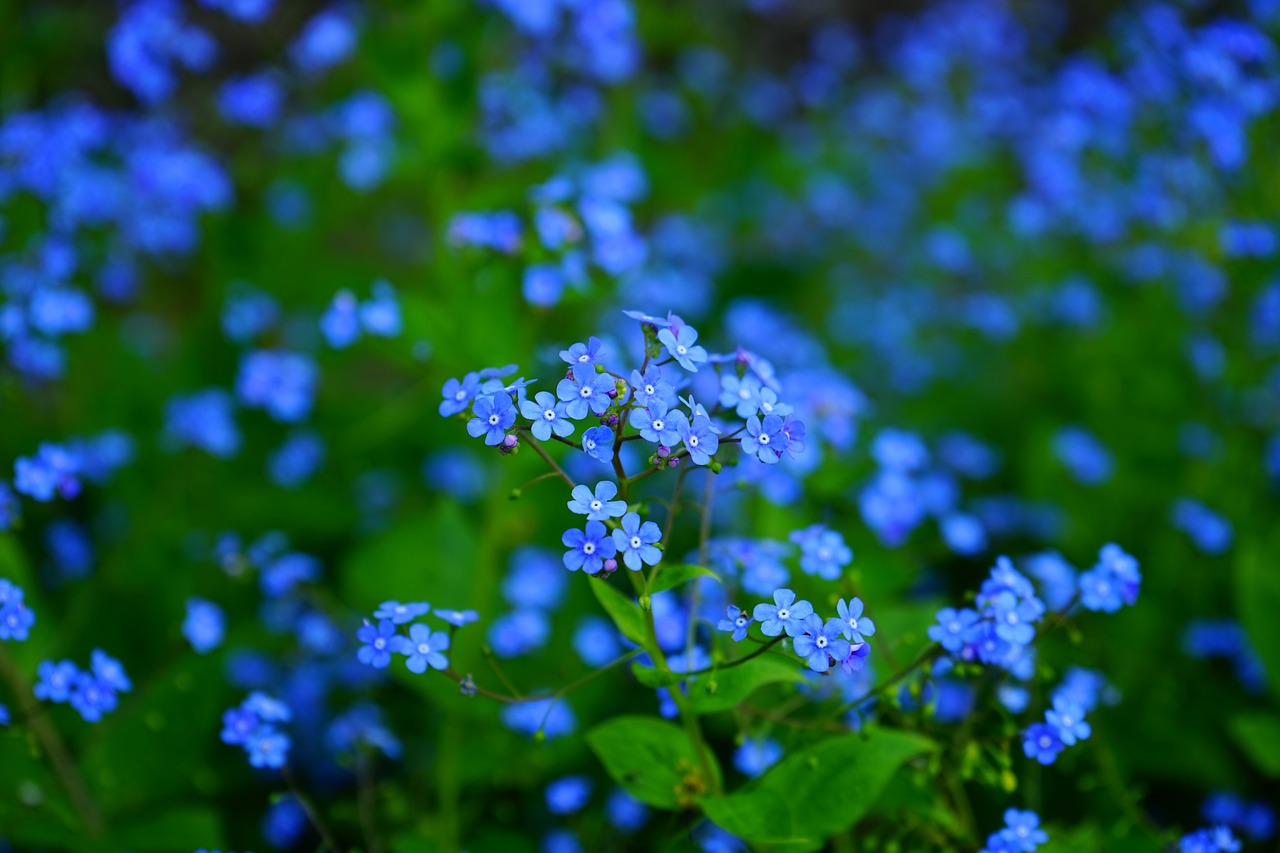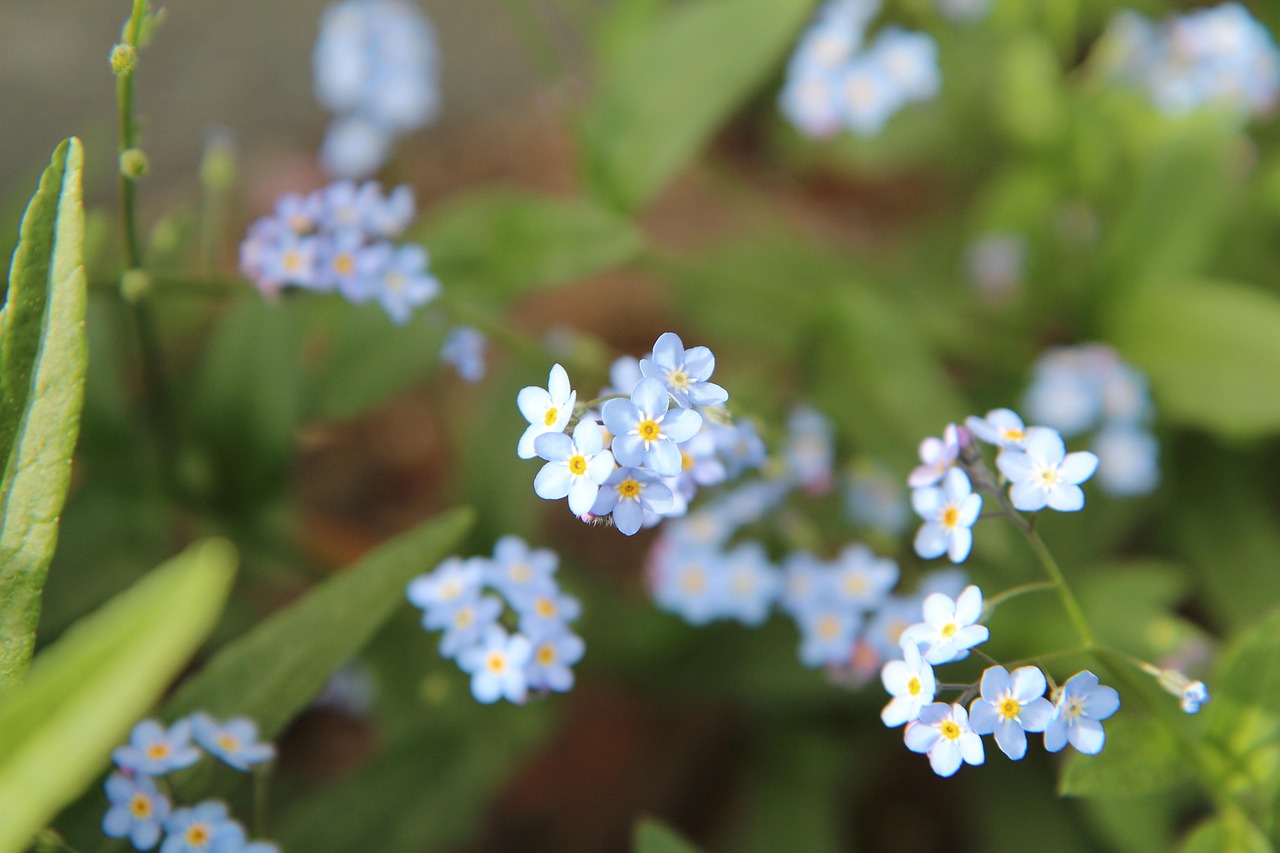To control forget-me-nots in your garden, regularly remove their flowers before they seed, use mulch to suppress growth, and consider manual removal or targeted herbicides for larger infestations. Proper planning and maintenance can help manage their spread effectively.
Understanding Forget-Me-Nots
Forget-me-nots, scientifically known as Myosotis, are charming little flowers that bring a splash of blue to gardens and natural landscapes. They are often associated with love and memories, making them popular among gardeners. However, their tendency to self-seed can lead to overgrowth if not managed properly.

These perennial plants are typically found in moist, shaded areas and can spread quickly through seed dispersal. While they are beautiful additions to any garden, their invasive nature can disrupt the balance of your garden’s ecosystem. Therefore, understanding how to control their growth is essential for maintaining a healthy garden.
Why Control Forget-Me-Nots?
Controlling forget-me-nots in your garden is crucial for several reasons:
- Invasive Nature: Forget-me-nots can quickly take over garden spaces if left unchecked.
- Competition: They compete with other plants for nutrients, light, and water.
- Aesthetic Balance: Excessive forget-me-nots can detract from the beauty of other flowers.
- Garden Health: Managing their growth helps maintain the overall health of your garden ecosystem.
Life Cycle of Forget-Me-Nots
Understanding the life cycle of forget-me-nots can greatly aid in controlling their spread. This plant generally follows these stages:

| Stage | Description |
|---|---|
| Germination | Seeds germinate in early spring under moist conditions. |
| Growth | Plants grow rapidly, developing leaves and stems throughout spring. |
| Flowering | Flowers bloom in late spring to early summer, attracting pollinators. |
| Seeding | After flowering, seeds are produced and dispersed by wind or water. |
Methods for Controlling Forget-Me-Nots
There are several effective methods for controlling forget-me-nots in your garden. Each method has its advantages depending on the extent of the infestation and your gardening practices.
1. Manual Removal
One of the most straightforward methods is manual removal. This involves pulling out the plants by hand, making sure to remove the entire root system to prevent regrowth. It is best to do this before they flower to minimize seeding.
2. Mulching
Applying a thick layer of mulch around your plants can help suppress the growth of forget-me-nots. Organic mulches like wood chips or straw not only block sunlight but also enrich the soil as they decompose.

3. Chemical Control
If forget-me-nots have taken over a large area, you may need to consider herbicides. Selective herbicides that target broadleaf plants can be effective without harming grasses or other desired plants. Always follow the manufacturer’s instructions when using chemicals in your garden.
4. Soil Management
Improving soil quality can also help control forget-me-nots. Ensuring good drainage and proper pH levels will make your garden less hospitable to these invasive plants while promoting the growth of desired species.
By combining these methods and adopting a proactive approach, you can effectively manage forget-me-nots in your garden. Understanding their growth patterns and lifecycle will empower you to make better decisions regarding their control.

Preventing Forget-Me-Not Invasions
Once you have controlled the existing forget-me-not population in your garden, it is essential to implement preventive measures. Taking steps to prevent future invasions will save you time and effort in the long run. Here are several strategies that can help keep forget-me-nots at bay.
1. Strategic Planting
Choosing the right plants for your garden can significantly impact the likelihood of forget-me-nots taking hold. Consider the following:
- Diverse Plant Selection: Plant a variety of species to create a balanced ecosystem. This diversity can help compete with forget-me-nots for resources.
- Native Plants: Incorporating native plants can reduce the chances of invasive species taking over, as they are better adapted to local conditions.
- Ground Covers: Use aggressive ground covers in areas prone to forget-me-nots. These can outcompete them for space and nutrients.
2. Timing of Planting
Timing can play a vital role in controlling forget-me-nots. Here are some tips:
- Spring Planting: Plant your desired flowers earlier in spring before forget-me-nots have a chance to germinate.
- Regular Monitoring: Keep an eye on your garden as the seasons change. Early identification of forget-me-nots will make them easier to manage.
3. Seasonal Maintenance
Seasonal maintenance practices can help keep forget-me-nots under control. Consider these tasks:
- Regular Weeding: Schedule regular weeding sessions to remove forget-me-nots and other weeds before they flower and seed.
- Pruning: Prune surrounding plants to improve air circulation and sunlight exposure, making it harder for forget-me-nots to thrive.
- Soil Testing: Conduct a soil test annually to determine pH and nutrient levels, allowing you to make informed decisions about soil amendments.
Understanding Soil Conditions
The success of controlling forget-me-nots heavily relies on understanding your garden’s soil conditions. Here’s what you need to know:
1. Soil pH Levels
Soil pH affects plant health, and forget-me-nots thrive in certain pH conditions. Ideally, maintain a pH level between 6.0 and 7.0 for most garden plants. Consider the following:
- Acidic Soil: Forget-me-nots prefer slightly acidic soil. Adding lime can raise the pH and reduce their growth.
- Alkaline Soil: If your soil is too alkaline, consider incorporating sulfur or organic matter to lower the pH.
2. Soil Drainage
Poor drainage can create favorable conditions for forget-me-nots. To improve drainage:
- Add Organic Matter: Incorporate compost or well-rotted manure to enhance soil structure.
- Avoid Compaction: Avoid walking on wet soil and use paths or stepping stones to minimize compaction.
3. Nutrient Management
Nutrient levels play a critical role in plant growth. Ensuring balanced nutrition can help your desired plants thrive while limiting forget-me-nots.
| Nutrient | Role in Plant Health | Source |
|---|---|---|
| Nitrogen | Promotes leafy growth and overall vigor. | Compost, fish emulsion |
| Phosphorus | Supports root development and flowering. | Bone meal, rock phosphate |
| Potassium | Enhances drought resistance and disease tolerance. | Kelp meal, wood ash |
By managing soil conditions effectively, you can create an environment that discourages the growth of forget-me-nots while promoting your chosen plants.
Cultivating Healthy Competition
Encouraging the growth of other plants can provide healthy competition against forget-me-nots. Here are some strategies:
1. Companion Planting
Selecting companion plants that thrive alongside your garden favorites can deter forget-me-nots. Consider these options:
- Lavender: Its strong scent may deter certain pests and invasive plants.
- Sage: This herb can compete effectively for resources and provide culinary benefits.
- Basil: Another culinary herb that thrives well with many flowers.
2. Creating Barriers
Using physical barriers can also be an effective way to control forget-me-nots. Here are some ideas:
- Cedar Mulch: Spread cedar mulch around desired plants. It can act as a natural barrier due to its aromatic properties.
- Garden Edging: Install garden edging to create defined boundaries, making it easier to manage unwanted growth.
Through thoughtful planning and management, you can successfully cultivate a thriving garden while keeping forget-me-nots in check.
Identifying Forget-Me-Not Infestations
Before implementing control measures, it is crucial to identify forget-me-not infestations accurately. Recognizing the signs of their presence will help you determine the best course of action. Here are key indicators of forget-me-not growth in your garden.
1. Visual Characteristics
Forget-me-nots are easily recognizable by their unique features. Look for the following:
- Height: Typically grow 6 to 12 inches tall.
- Leaves: Heart-shaped, with rough edges and a fuzzy texture.
- Flowers: Small, bright blue flowers with yellow centers, blooming in clusters.
- Growth Habit: They often form dense mats that can overshadow other plants.
2. Seasonal Appearance
Forget-me-nots typically emerge in early spring. Observing their growth patterns throughout the seasons can help in managing their spread.
- Spring: Growth begins as temperatures rise, and flowers start to bloom.
- Summer: After flowering, they produce seeds that can disperse widely.
- Fall: Leaves may die back, but seeds remain viable in the soil until spring.
Managing Established Infestations
If forget-me-nots have already established a significant presence in your garden, more aggressive management strategies may be necessary. Here are steps to take when dealing with established infestations.
1. Assessing the Infestation
Begin by evaluating the extent of the infestation. Consider the following factors:
- Size of Area: Determine how large the infested area is and how many forget-me-nots are present.
- Surrounding Plants: Identify which plants are affected and how much competition they face.
- Soil Conditions: Assess if soil conditions favor forget-me-not growth, such as moisture levels and nutrient content.
2. Removal Techniques
Once you have assessed the situation, employ suitable removal techniques. You may need to combine different methods for effective control:
- Hand Pulling: For smaller infestations, hand-pulling can be effective. Ensure you remove the entire root system to prevent regrowth.
- Tilling: For larger areas, consider tilling the soil to uproot plants. This method is best used when seeds are not yet dispersed.
- Herbicides: In cases of severe infestation, applying a targeted herbicide may be necessary. Choose one that specifically targets broadleaf plants.
Timing for Effective Control
The timing of your control efforts is critical to their success. Here are some guidelines for optimal timing:
1. Early Spring Action
The best time to manage forget-me-nots is during early spring before they flower. Implement these actions:
- Monitor Growth: Keep an eye on emerging plants and take action immediately.
- Remove Flowers: Pinch off any flowers before they have a chance to seed.
- Apply Herbicides: If necessary, apply herbicides when plants are actively growing for maximum effectiveness.
2. Late Summer Maintenance
After flowering and seeding, maintain vigilance during late summer:
- Post-Flowering Removal: Continue to remove any forget-me-nots that appear after flowering.
- Monitor Seedlings: Watch for new seedlings in late summer and early fall.
Creating a Long-Term Management Plan
A long-term management plan can help ensure that forget-me-nots do not return to your garden. Consider the following components for your plan:
1. Regular Monitoring
Create a schedule for regular monitoring of your garden. This should include:
- Weekly Checks: Inspect your garden weekly during the growing season.
- Avoiding Overlooked Areas: Pay special attention to shaded or damp areas where forget-me-nots may thrive.
2. Community Involvement
If you live in a community with shared green spaces, consider involving neighbors in monitoring and controlling forget-me-nots together. Collaborative efforts can lead to better outcomes.
3. Educational Resources
Stay informed about gardening best practices and invasive species management through workshops or local gardening clubs. Engaging with local experts can provide additional insights.
By implementing a comprehensive management plan and staying proactive, you can effectively control forget-me-nots in your garden while enhancing its overall health and beauty.
Additional Strategies for Long-Term Control
In addition to the management strategies already discussed, there are several other approaches you can adopt to ensure forget-me-nots do not re-establish themselves in your garden. These strategies focus on maintaining a healthy ecosystem and preventing the conditions that allow forget-me-nots to thrive.
1. Implementing Crop Rotation
If you are growing various plants in your garden, consider implementing crop rotation. This practice involves changing the types of plants you grow in certain areas each year. Benefits of crop rotation include:
- Diverse Nutrient Requirements: Different plants require different nutrients, which helps prevent soil depletion.
- Disruption of Pest Life Cycles: Changing plants makes it harder for pests and invasive species like forget-me-nots to establish themselves.
- Soil Health Improvement: Rotating crops can improve soil structure and enhance fertility over time.
2. Encouraging Beneficial Wildlife
Attracting beneficial wildlife can help control forget-me-nots naturally. Here are ways to create a wildlife-friendly garden:
- Plant Pollinator Gardens: By planting flowers that attract pollinators, you can encourage beneficial insects that prey on pests.
- Create Habitat Areas: Set up small areas with natural materials to attract birds and insects that can help control invasive plants.
- Use Native Plants: Native species are often more resilient to local pests and diseases, providing competition against forget-me-nots.
3. Using Companion Planting Techniques
Companion planting not only helps deter forget-me-nots but can also promote the growth of your main plants. Consider the following combinations:
- Marigolds: Known for their pest-repelling properties, marigolds can deter harmful insects while providing a vibrant color contrast.
- Mint: While mint can be invasive itself, when planted strategically, it can help keep forget-me-nots at bay due to its vigorous growth.
- Rosemary: This herb can compete for space and resources while providing aromatic benefits.
Final Thoughts
Controlling forget-me-nots in your garden requires a combination of proactive management and ongoing vigilance. By understanding their growth patterns, implementing effective removal techniques, and creating a supportive environment for your desired plants, you can maintain a beautiful and thriving garden.
The key takeaways for successfully managing forget-me-nots include:
- Regular Monitoring: Frequent checks in your garden will help you catch forget-me-nots before they spread.
- Soil Health Management: Focus on improving soil conditions through organic amendments and proper drainage.
- Community Collaboration: Engaging with neighbors can lead to more effective control measures in shared spaces.
- Diverse Planting Strategies: Using a mix of plants can create competition and reduce the likelihood of forget-me-nots overpowering your garden.
Through these methods, you can enjoy the beauty of forget-me-nots while keeping their invasive nature under control. With dedication and the right strategies in place, your garden can flourish without the overwhelming presence of these charming yet persistent flowers.
